The BMW E39 M5 is a high-water mark for analog super sedans, representing a unique point in automotive history. You can feel a certain heft in the door handle of a proper saloon car from the late 90s, a solid, mechanical thunk that soft-close motors just can’t copy. You feel it before you even fire up the engine. It’s a promise of substance. While newer cars are impressively light and digital, sometimes you want something with density. You want something analog. And really, nothing delivered that dense, analog, four-door experience with more aggression and class than the BMW E39 M5.
We all know the highlight reel, like the old Chris Harris videos or the EVO magazine covers that called it the best saloon car ever built.
But that’s just the trailer.
The real story begins after 100,000 miles, when the warranty is a faint memory and you’re the one gripping the wheel, smelling that mix of warm leather and high-octane fuel. This isn’t just a look back. It’s a field guide for those of us who are still hooked.
Quick Links
BMW E39 M5 Key Takeaways for the Obsessed
- S62 personality: docile shove below 3,500 rpm, banshee howl above it, all fed through old-school hydraulic steering you won’t find in anything built after 2005.
- VANOS reality: it’s not a horror story—just a wear item. Budget $2.5–4 k, listen for the cold-start rattle, move on.
- Shifter fix: quality short-shift kit + heavy knob = transforms the Getrag 420G from “fine” to “click-clack perfection.”
- Market math: sub-$20 k = project, $25–40 k = solid driver, anything higher and you’re paying collector tax for low miles and rare colors.
- Why it matters: still the benchmark analog super-sedan—last sweet spot of tech and feel before the nanny electronics era hit full tilt.
So What Made Engineers Think This Was a Good Idea?
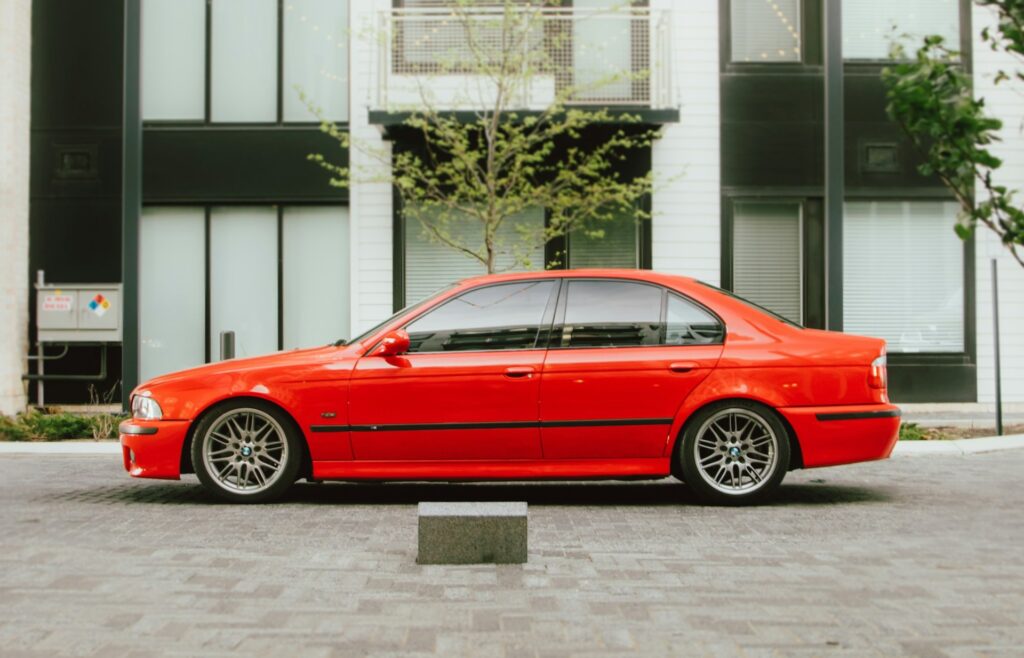
On paper, the E39 M5 is a string of brilliant, slightly wild engineering calls. The kind of stuff that would get a modern bean-counter fired. They didn’t just cram a big engine into a 5-series. They built a custom heart for it and then beefed up the whole chassis to handle the power.
The S62B50 is not some lazy, pushrod V8. This is a 4.9-liter, 32-valve, quad-cam engine with eight individual, electronically controlled throttle bodies. That last detail is key. It’s why the throttle response is so immediate, so connected to your right foot. Below 4,000 rpm, it serves up a huge wave of torque. Above that, the double-VANOS system, which is variable valve timing on both intake and exhaust cams, truly wakes up, pulling with an urgency that makes the big sedan feel small. It’s an incredible experience.
The engine also uses a semi-dry-sump oil system. Basically, two scavenger pumps pull oil from the cylinder heads back to the sump, making sure the main pump never runs dry during hard cornering. This wasn’t designed for a casual highway cruise, this was designed for the Nürburgring.
This car doesn’t coddle you, it expects you to keep up.
The suspension is heavy on aluminum, an expensive decision that cuts down on unsprung weight. The brakes were huge floating rotors for the time. And then you get to the steering. Everyone raves about the E39’s steering feel, and for good reason. But it’s not a rack-and-pinion setup you might expect.
Actually, let me clarify that. It’s a recirculating ball system.
Yep, the kind of tech usually found on trucks and old Mercedes models. The M division engineers stuck with it because they felt it was better at filtering out road noise on a heavy, powerful car, while the Servotronic assistance could be tuned to give the weight and feedback they were after.
Was it a lucky accident or just stubborn genius?
The result is steering that feels weighty, intentional, and surprisingly talkative. It’s one of the car’s most defining, and misunderstood, features.
The Weak Point: VANOS
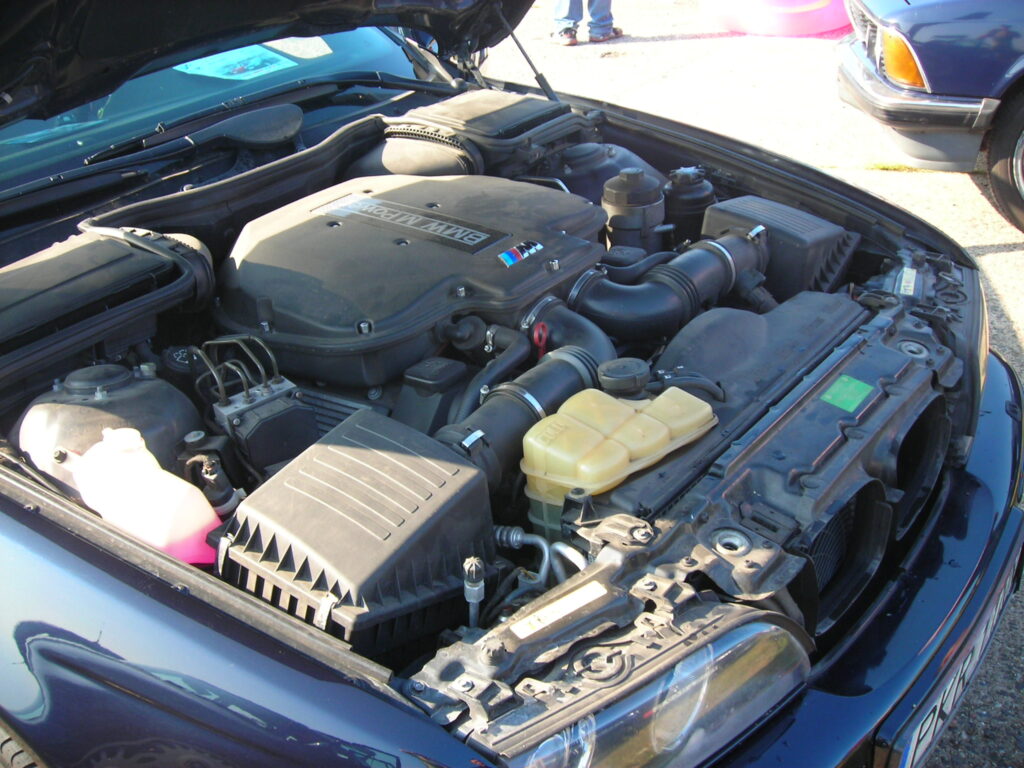
Let’s get into the VANOS. On forums like M5Board, people talk about it in hushed tones, about the infamous cold-start rattle that signals your bank account is about to get a lot smaller. And yeah, it’s a real thing. The system uses oil pressure to shift cam timing, and with age, the seals inside the solenoids wear out and the gears develop play. This causes that clattering noise for the first 30 to 60 seconds after you start it from cold.
Ignoring it is a terrible idea. A failing VANOS system robs you of power, murders your low-end torque, and just makes the S62 feel sluggish. A proper rebuild from a specialist like Dr. VANOS or using Beisan Systems parts isn’t cheap, but it brings the car right back to how it felt leaving the factory. You budget for it like you budget for tires. It’s simply the cost of admission.
The other issue is carbon buildup.
Those gorgeous individual throttle bodies and the direct fuel injection mean that carbon can collect on the intake valves and clog up the secondary air injection ports. The community is split on how to deal with this. One side swears by the occasional “Italian tune-up,” which means finding an open road and running the engine to redline through a few gears to blow the gunk out. The other side is adamant that the only real fix is a mechanical cleaning, like walnut blasting, every 60,000 miles or so. I think the truth is somewhere in the middle. Driving the car hard definitely helps, but a deep clean every few years is the only way to be totally sure. It’s just another part of this car’s personality. It’s a high-performance machine that demands to be driven, not just parked.
Must Need Mod for the BMW E39 M5?
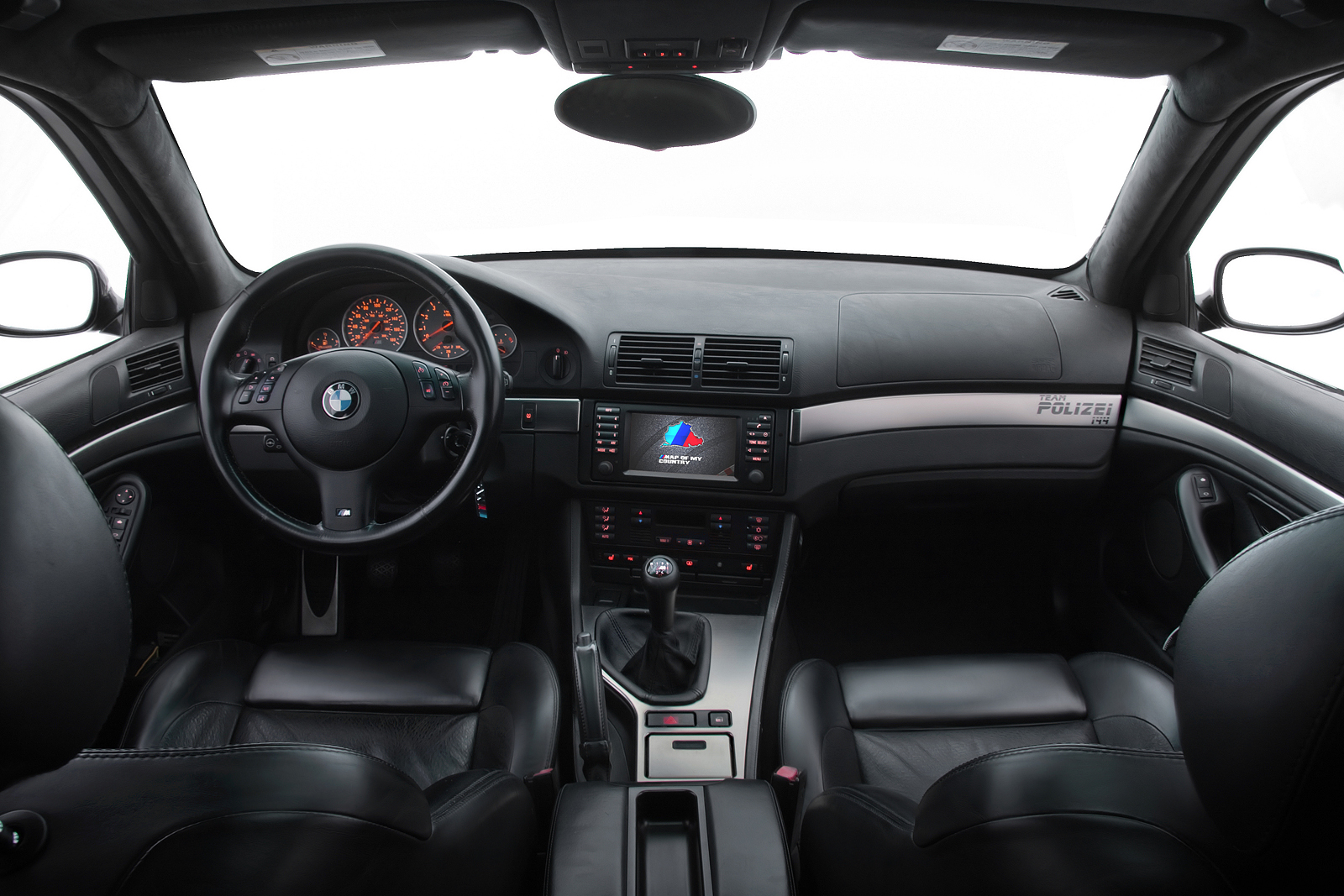
The Getrag 420G six-speed manual is a tough gearbox. It can handle the S62’s power without breaking a sweat. The stock shifter linkage, however, is just… okay. The throws are a little long and it feels a bit rubbery. It’s like a small compromise made for luxury that dulled the car’s sharp personality.
This is the easiest and most satisfying fix for the entire car.
A good short-shift kit from a brand like UUC or Rogue Engineering is the first step, shortening the throw and adding a much more positive, “click-clack” feel. But the secret sauce, the piece that makes it all work, is a weighted shift knob. Something like the 1.5 lb knob from a ZHP-package 3-series or a similar aftermarket piece. Wait, I should mention the weight is critical. The extra mass smooths out the whole action, helping the shifter glide into each gate with almost no effort but maximum mechanical feel.
The whole setup is about $500 if you’re wrenching on it yourself, and it’s a total game-changer. It takes a good manual gearbox and makes it truly great, to the point you find yourself shifting for the fun of it. It is the single best mod you can make to improve the connection between you and the E39 M5.
Pre-LCI vs. Post-LCI: The Only Argument That Matters
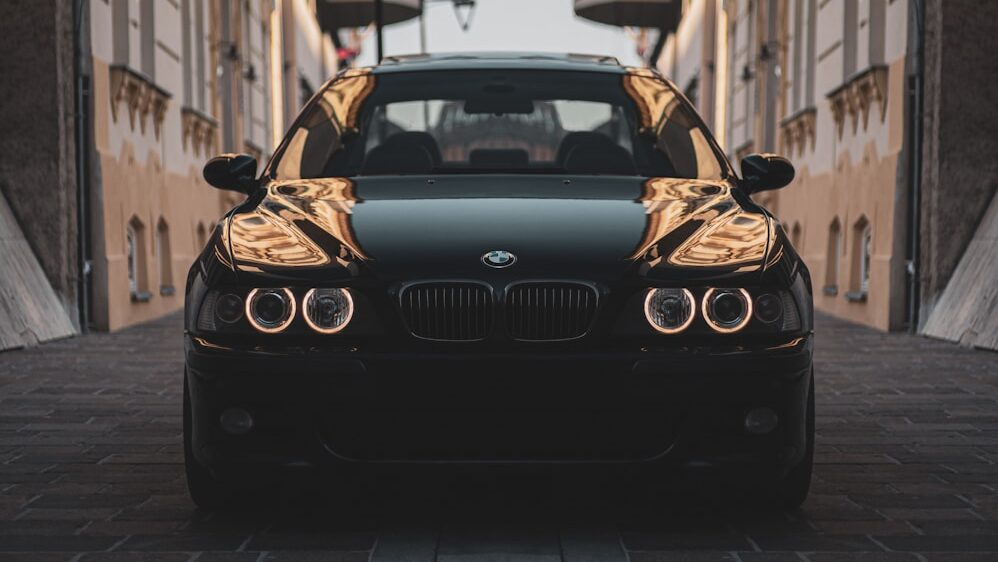
You can’t browse an M5 forum for more than ten minutes without seeing this fight break out. In March 2000, BMW updated the 5-series with its “Life Cycle Impulse” (LCI), or facelift, for the 2001 model year. The changes for the M5 were small but key, sparking a debate that’s probably as old as that famous M5Board thread from 2008.
Post-LCI (2001-2003) cars got:
- The “Angel Eye” headlights. This is the big one for most people.
- A different, thicker M steering wheel, which everyone seems to want.
- Instrument dials that were grey instead of black.
- A widescreen 16:9 navigation screen that looks hilariously old now.
- Some say revised piston rings were used, which supposedly cut down on the S62’s famous oil consumption.
Pre-LCI (1999-2000) models have:
- The classic halogen headlights, which some prefer for a cleaner look.
- An older, thinner four-spoke steering wheel.
- Slightly less complicated electronics in certain areas.
The steering wheel and headlights are the main points of contention, and many pre-LCI owners end up swapping them anyway. The oil consumption claim is mostly anecdotal, a healthy S62 will burn about a liter every 1,500 miles, no matter the year. This is one of those 2 AM arguments that will never be settled.
My advice?
Buy the best condition car you can find, not the best year. A well-maintained pre-LCI is a much better buy than a beat-up post-LCI model.
BMW E39 M5 Prices Right Now
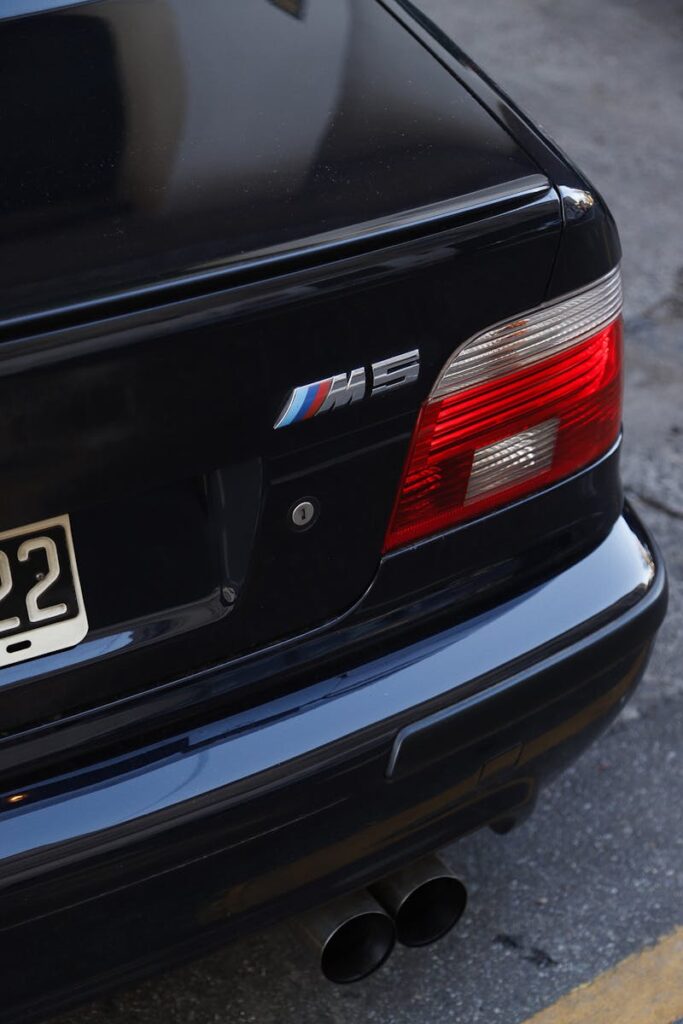
For a long time, the E39 M5 was the best performance deal out there. You could find a decent one for the price of a new GTI. Those days are over. The market has woken up, and now it’s split into two clear groups.
- The Driver: This is the car in the $25,000 to $40,000 range. It will probably have between 80,000 and 140,000 miles. It’s got some stone chips on the nose. The owner will hand you a thick binder of receipts for the VANOS job, a new clutch, and suspension work. This is the car you buy to actually drive and enjoy without having a panic attack about parking it somewhere. This is the sweet spot.
- The Collector: This is the $50,000+ car, often pushing into the $70k to $90k range for a perfect, low-mile example in a great color like Imola Red or Le Mans Blue. These cars are spotless. They are treated like investments. They’re amazing to look at, but adding miles feels like setting money on fire.
The cars you need to avoid are the ones listed for under $20k. They almost always need everything. That cheap price is a fantasy, you’ll easily spend another $15,000 just to get it to the level of a decent “driver” car. Don’t just walk away from those listings. Run.
In the end, the E39 M5 isn’t just a car, it’s a statement. It says you value feel over raw speed, engagement over electronic nannies, and real character over lifeless perfection. It comes from a specific time when engineers, not accountants, were making the big decisions. In a world of silent EVs and fake engine noise, that seems more important than ever.
